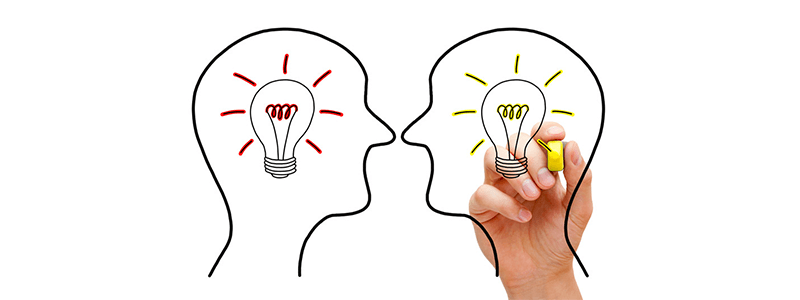Some of you may know the iconic VW Beetle ad from the 1960s: Think Small.
The genius of this marketing campaign was its “cognitive dissonance” – a contradiction created when you’re presented with two opposing ideas simultaneously. In this case it’s two dissonances. One is the idea of a new car – typically bigger, more luxurious, more powerful than the car you have – being less instead of more. The second turns the familiar phrase “think big” upside down – no one aspires to be a “small” thinker.
And here’s where the advantage of cognitive dissonance becomes clear. You’ve been thinking about this cognitive dissonance for a few seconds now – probably a lot more than you thought about the last car ad you saw. And you’ll keep thinking about it until you resolve it in your mind: namely, that smaller is bigger when it comes to a car’s price, cost, reliability and efficiency.
It’s that discomfort that gets you to pay attention. And psychologists tell us that when our brains are trying to resolve opposing ideas, we’ll act on the one that creates minimum distortion to our ego. Put another way, we’ll act on the idea that’s most flattering to us. In the VW example, we’re sophisticated insiders who understand good value, and can afford a second car – not that is all we can afford is a cramped, under-powered, no-frills vehicle.
Here’s another example. A woman suddenly accosts you while you’re walking down the street. She hands you a flower, smiles and says, “It’s a beautiful day. I want you to have this flower.” You’re flattered and she seems friendly. She starts walking with you and telling you that you’re special. You’re feeling good about yourself. Then she says, “I know you’re kind. I know you’ll help me – right?”
The dissonance, or dis-harmony, comes from two conflicting ideas or decision paths. One path tells you that you should just say “No thanks!” and keep on walking; maybe return the flower and feel insulted, even if it means she ‘ll be disappointed. The other path tells you that she’s made you feel good, and has earned your friendship and a couple of bucks. She has been friendly and you don’t want to ruin the brief relationship you have formed. Heck, you should probably even give her back the flower so she can use it on the next victim.
Which decision will cause the least damage to your ego?
In cognitive dissonance theory the outcome of these opposing thought paths will be the one that requires the least emotional stress. Most victims will pay up rather than feel they’re being cruel or disrespectful to someone who has made them feel so good.
Psychologists refer to this vulnerability as the “willful suspension of disbelief,” where people can easily see the potential manipulations and evil motives of the perpetrator. But because they have already made some prior commitment to go along with this, it’s easier to continue than to back out.
Now let’s examine a more tactful example: A welcome email from Schuh.
See what’s happening here?
The copy says: “Not another welcome email”?
But what makes this email so special? What makes it “not another welcome email.” Not much! Nothing creates unparalleled value. Nothing delivers a special vibe or entertainment to the reader – except the fact that – well – it promises something, and – it doesn’t deliver.
So two secret “paths” are running through the reader’s head. One, as the copy says – this is not another welcome email. Two, there is nothing special about this email.
This is cognitive dissonance happening right there. Are you seeing it? In order to alleviate the tension in your brain, the best you can do is pursue the path of ‘least emotional resistance.” Which is to click through it, and justify to yourself, that indeed, you were not totally fooled by it. It indeed “wasn’t another welcome email.”
See the magic happening? For marketers, that translates to higher click rates for your content.
Of course, you wouldn’t want to overuse this scheme, not even the tactful version of it, because eventually customers would hate you for manipulating their minds and so they would never trust your brand again.
But this little piece of cognitive dissonance from Schuh, is just the right amount to increase click rates. It creates just enough of this nauseous feeling of two conflicting thoughts to make you want to justify the little scheme riding in your head.
Ben Settle’s podcast is called “Anti-Preneur.”
Say what?
Everybody wants to be a better entrepreneur, right? You want to find justification for why you’re pursuing a strong entrepreneurial path. That’s thought number one. But then you encounter Ben’s blogs or podcasts. You see the brand name – “Anti” – right there in front of you, and you ask yourself: Why have I invested time on this page, learning to be “anti”-preneur? No way! I must click through and justify my time investment.
See it happening?
Can you think of other ideas how cognitive dissonance can be used for better email marketing and higher click rates?
• Useless – product
• Worst – customer service
• Diluted – brand
• No – value
• Over priced
Can you tie any of these ideas to your welcome email in a tactful way? Meaning – without being too disturbing or blunt about it?


